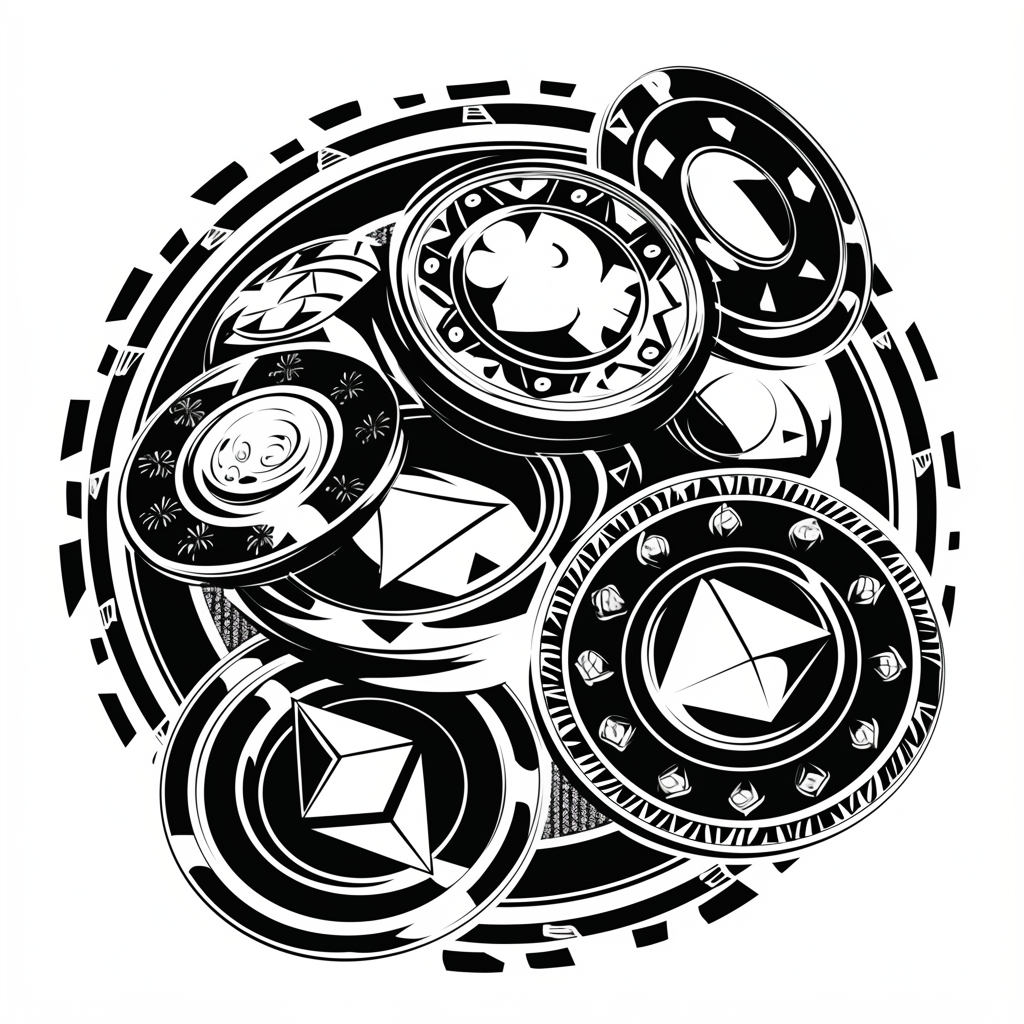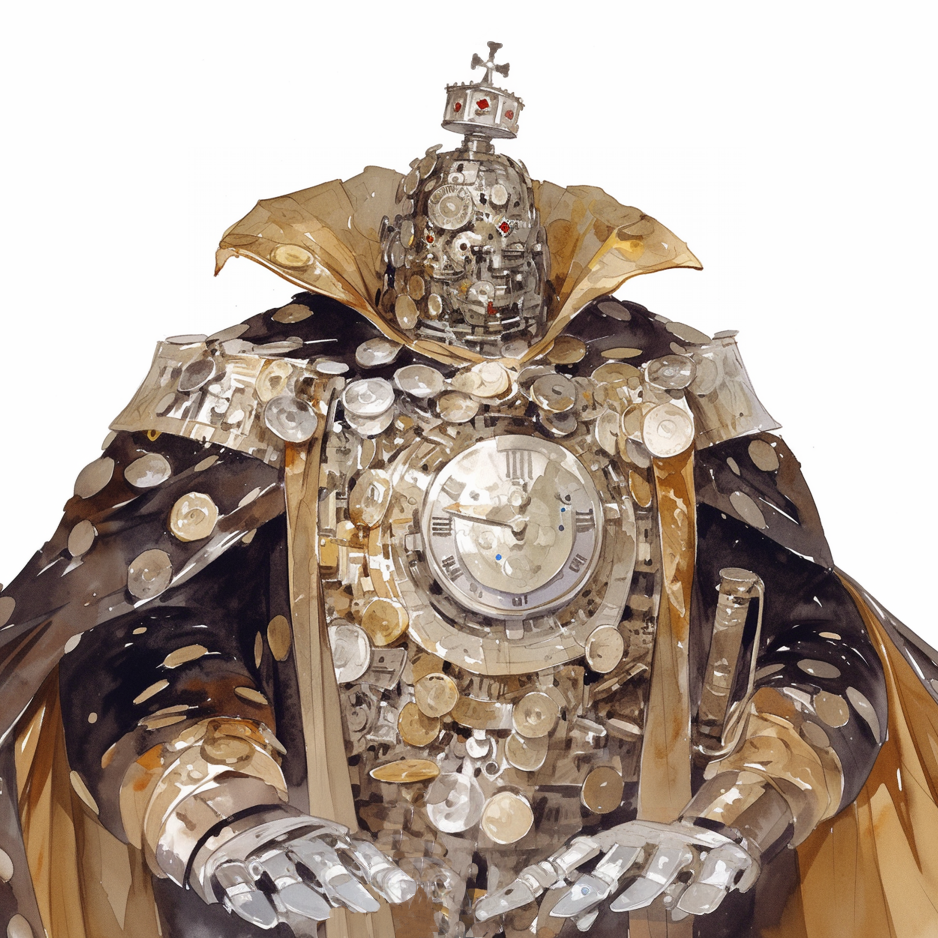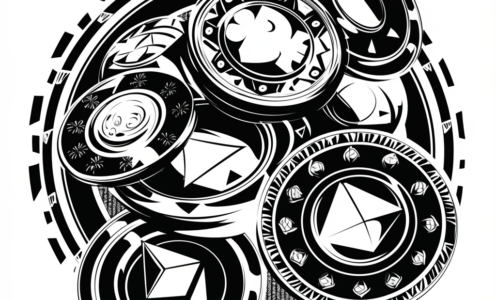Numismatists
Also known as: The Jink-Janglers

Every Coin’s got a Story

Many cutters get the Numismatists and the Merkhants confused, since both sects are fascinated by money. While the Merkhants seek to earn as much as they can, the Numismatists are more philosophically minded (see below for more on this). Sure, they like to have jink as much as the next berk. But the philosophy of the jink-janglers goes a bit deeper than that—they believe every coin has a story to tell. Understanding the times it changed hands, what was traded in exchange, between whom, when and where—all of these facts can be learned with appropriate study, magic or psychic insight, and they all add to then chains of value that bind and control the multiverse. The Numismatists study currency not just as an economic tool but as a metaphysical one. Value, they argue, is the key to understanding belief, trust, and power. Coins, once imbued with significance by societies, carry echoes of the thoughts and actions they’ve inspired. Unless an economy decides that gold is valuable, it’s just a shiny bit of metal. To hold a coin therefore, they say, is to hold a shard of reality itself.
Numismatists debate endlessly about the ideal currency—what it represents and how its use shapes the multiverse. Some advocate for an economy of ideas rather than commodities, believing that belief itself is the purest form of exchange. Others are pragmatists, happy to deal in whatever shiny metal keeps the planes spinning.
The Numismatists are moneychangers, bankers, and mercenaries of value. They operate vast vaults and secret markets, where rare coins and exotic currencies from across the planes are traded. They are historians, charting the rise and fall of civilisations by the coins they leave behind them. They’re also experimentalists, minting new coins and testing the effects of economic policies on communities or entire economies.
While the Numismatists themselves believe they wield incredible power, they claim neutrality. They’ll work with almost anyone, so long as the transaction aligns with their philosophy and there is value in it. But betray their trust or devalue their currency, and you’ll find your wealth—and your reputation—disappearing faster than an ice cube in Phlegethos.
“Debt is just a bet that tomorrow will be kinder than today”
—A Numismatist maxim
Sect History and Headquarters: The Numismatists trace their origins to the Mechanical city of Nomisma, a economic powerhouse through which currencies from across the planes flow like water. Initially a secretive cabal of philosopher merchants, miserly sages, and planewalkers, they tumbled to the dark that coins carried more than material value—they resonated with the beliefs and ambitions of their makers.
During the First Great Depression of Nomisma, the group split: some members sought to preserve their wealth, left the burg and became the first travelling Merkhants, while others aimed to mint currencies of philosophical purity and prevent such an economic collapse from occurring again. From this second group, the Numismatists emerged, forging their creed as they found ways to rebuild their economy. In Nomisma they founded hidden vaults and established currency markets, always testing how coins—whether minted from gold, magic, or ideals—could shape the societies that used them. Over time, their reputation grew, and they became brokers of not just wealth but influence. The Numismatists have even minted currencies for celestial and fiendish realms alike. A current scheme of the sect is the so-called Unified Coin Project, where some Numismatists seek to introduce a currency that is multiversally accepted. The implications on planar economics are still being worked through; they are likely to be profound, if not economically disruptive.

The Sectol: Exarch Chrysmos (planar construct [they/them] / Numismatists / LN), is a clockwork humanoid who serves as the Warden of Worth—the highest-ranking Numismatist. Chrysmos, a being apparently composed of precious metals and enchanted gemstones, is famous for their impartiality and mathematical precision in all things. Their decisions are as cold and precise as the ticking gears of Mechanus, and their economic policies are treated as immutable law. Most bashers believe that Chrysmos is some kind of advanced construct, and is dubbed the ‘Money Golem‘ behind their back. The dark is that Chrysmos is indeed entirely mechanical but is also very much alive; think an inevitable but one obsessed with economics rather than justice.
Chrysmos governs the Numismatists and hence the city’s commerce with an unflinching hand on the purse strings, overseeing the ‘Nomismatic Flux’, the mystical economic current that travels through the air like invisible streams of wealth, shifting in response to every deal, trade, or theft made in the city. Under Chrysmos, the city’s economy hums like a perfectly tuned machine. His proclamations are clear, his leadership steady. But as with most things in Nomisma, what you see is only part of the equation.
See the entry for Nomisma for more information on who really rules the burg.

Role-Playing the Numismatists:
- Speak in Metaphors of Wealth: Use phrases like, “You’re investing poorly,” or, “That’s a debt you’ll regret,” to tie conversations back to currency and value.
- Obsess Over Details: Examine coins, contracts, or trade deals with an almost fanatical eye. Treat every transaction as sacred. Numismatists are just about the only bloods who can spot the loopholes in a baatezu contract.
- Revere Coins as Artefacts: Learn the history of coins, attributing mysticism to their origins or significance. A Numismatist is more excited to find a new type of copper piece than they are a common gold coin. Some cutters go even further with this reverence, developing psychic powers that allow them to read the history of a coin and who has owned it.
- Play the Long Game: Focus on manipulation, influence, and value—not necessarily in gold, but in alliances and favours too.
Membership: Joining the Numismatists ain’t as simple as flipping a coin. Prospective members must demonstrate an understanding of value—beyond mere gold or silver—through trials of trade, negotiation, and insight. Recruits are often given seemingly mundane coins and tasked to venture out and exchange them in transactions of increasing value, and are judged less on wealth and more on significance and the story they return with. The sect’s leaders judge aspirants on their ability to perceive value in unexpected places and maintain honour in transactions. Only those who prove they can wield currency as a tool of philosophy and power are admitted. Those who fail find the non-refundable membership entrance fee to be punishingly high.
Structure: The Numismatists are organised like a trade guild with layers of influence and responsibility, all tied to their philosophy of value.
- The Ledgerkeepers: At the top sit the sect’s leaders, who guide the group’s philosophy and strategy. They dictate grand experiments in currency and oversee the Unified Coin project.
- The Mintmasters: Trusted middle-tier members who manage Numismatist holdings, secret vaults, and the experimental exchanges across the planes.
- The Coinbearers: New initiates tasked with proving their worth by travelling the planes, making trades, discovering rare currencies and documenting the stories and impacts of their exchanges.
While the Ledgerkeepers make key decisions, all members are encouraged to propose ideas for new currencies, trade experiments, or economic philosophies—provided they can defend their theories in rigorous debate.
Allies & Enemies: Merkhants: See below
The Fraternity of Order: The Guvners respect the Numismatists’ methodical approach to economies and their meticulous tracking of transactions, seeing them as kin in rational inquiry.
The Sensates: Both factions appreciate the stories and significance behind objects, with Sensates drawn to the tales coins carry through their travels. “They get that every coin’s got a tale. It’s just a pity they’d rather spend it on fleeting pleasures than lasting change.”
The Mathematicians: “Those number-crunchers understand precision but lack soul. Value isn’t just math; it’s belief, cutter.”
The Fated: “Ambition’s a fine thing, but they’re blind to the forces behind the gold they hoard.”
Merchants and Traders: Many independent planar merchants rely on the Numismatists’ expertise in rare and exotic currencies.
The Athar: The Athar disdain the Numismatists’ reverence for currency, considering it another misplaced form of worship.
The Doomguard: The Numismatists’ focus on creating and stabilising economies clashes with the Doomguard’s philosophy of entropy and decay.
Hands of Havoc: The anarchists seek to smash the system and the system most definitely includes the rich plutocrats that the Numismatists represent.

Advantages & Disadvantages: Coin of Value: New members each receive a unique enchanted coin from the Numismatist vaults, which they can use for divination, of as a focus for spells or meditations. [5e: Once per day, it can be used to grant advantage on a Persuasion or Insight check related to trade, contracts, or negotiations; PF2: once per day it grants a +2 circumstance bonus on a Diplomacy check related to trade, contracts, or negotiation]
Vault Access: Members can access secret Numismatist vaults across the planes, providing safe storage or ability to acquire rare local currencies for missions.
Debt of Trust: Violating a transaction’s terms or misusing Numismatist resources can lead to financial penalties or debts owed to powerful members.
Target of Thieves: Association with the Numismatists makes a cutter a prime mark for planar vagabonds and factions like the Hands of Havoc.
A Few Words About Merkhants: The Numismatists and Merkhants share a core interest in wealth, commerce, and the manipulation of currency. Both groups also have intricate social and economic networks, leveraging relationships and deals for influence, but the two sects differ significantly in philosophy beyond this. Both believe in the immense power of wealth, though they seek it for different ends—Numismatists as a tool for cosmic understanding, viewing economic wealth as a means to influence the multiverse’s balance and a way to accumulate knowledge. In contrast, the Merkhants are driven by the desire for profit and control, using commerce to fuel their endless pursuit of more wealth without concern for larger philosophical matters.
The Numismatists seek to maintain balance in trade and view coinage as a tool for interplanar study, often working together for mutual benefit—albeit with a level of professional rivalry. The Merkhants, on the other hand, are highly competitive and openly sabotage one another, with their focus on personal gain over collective benefit.
Relationship Between the Groups: While they have common interests in trade and wealth, Numismatists tend to see Merkhants as short-sighted and driven by avarice. The Merkhants, for their part, view the Numismatists as excessively idealistic and naïve in their approach to money. However, the two sects maintain a wary respect, occasionally working together if there’s mutual profit to be gained.
Confusion Between the Two: The two sects are often confused because of their shared emphasis on trade—especially the less well-known Numismatists being mistaken for their higher profile cousins. Numismatists find this frustrating, as they pride themselves on their philosophical approach to commerce, as opposed to avarice. They are quick to correct such mistakes, keen to point out their cause is more refined than the Merkhants’ cutthroat capitalism. Merkhants care far less, realising that it may be possible to turn such misunderstandings into profit-making advantages.
See also:
- Money Makes the Cogs Go Around — a song about the Numismatists
- Nomisma — the economic hub of Mechanus and home of the sect
Source: Jon Winter-Holt. This sect is a homebrew addition.



